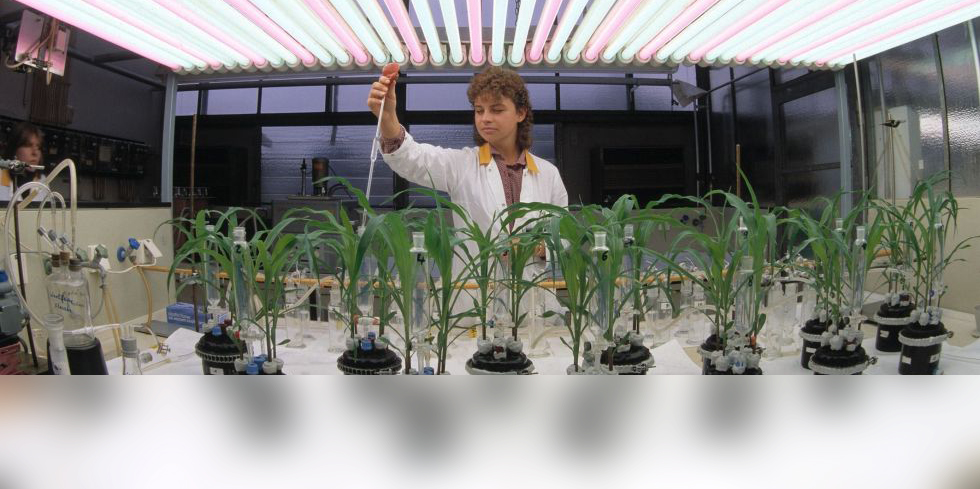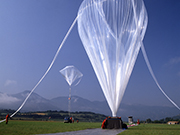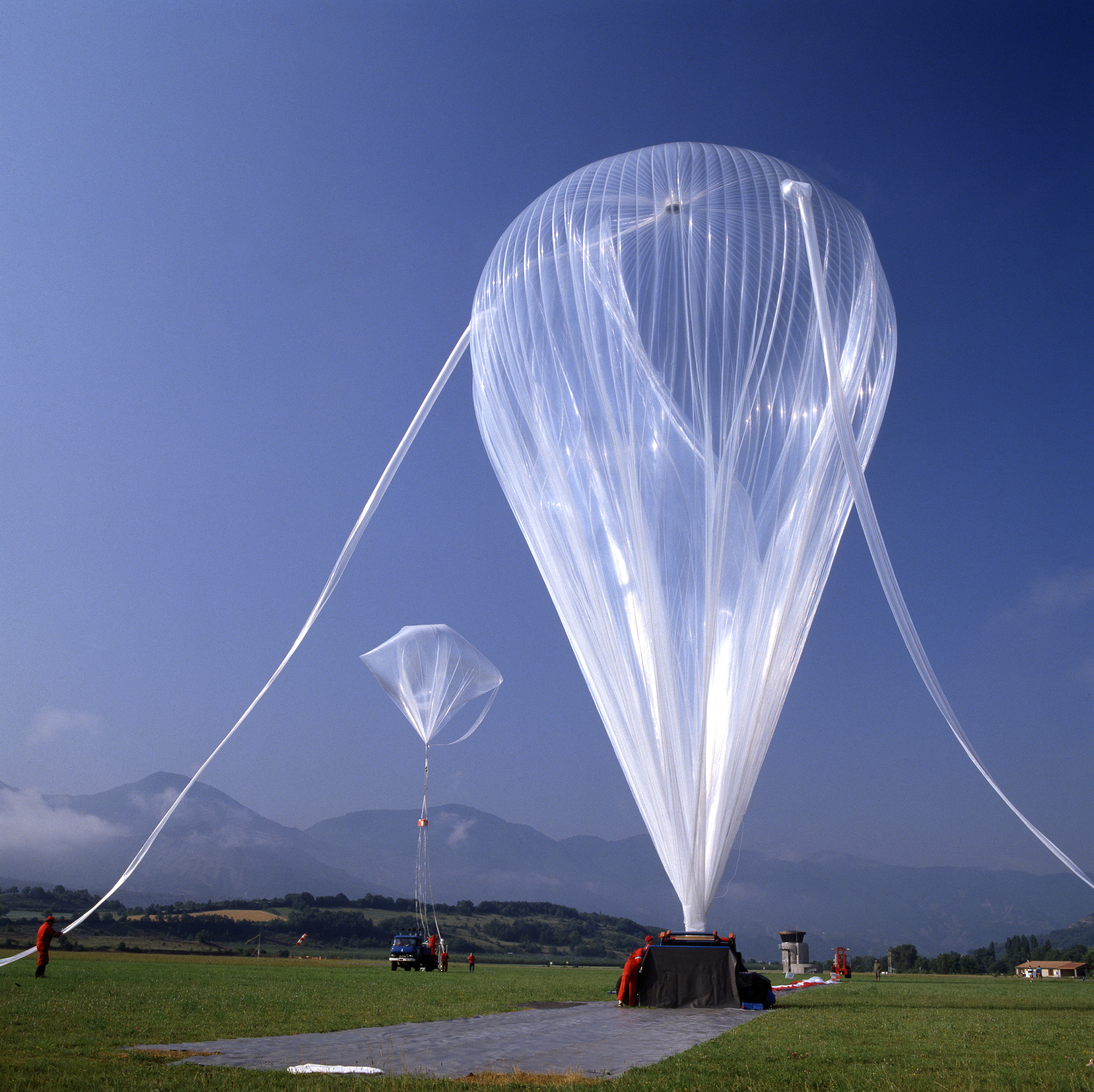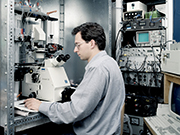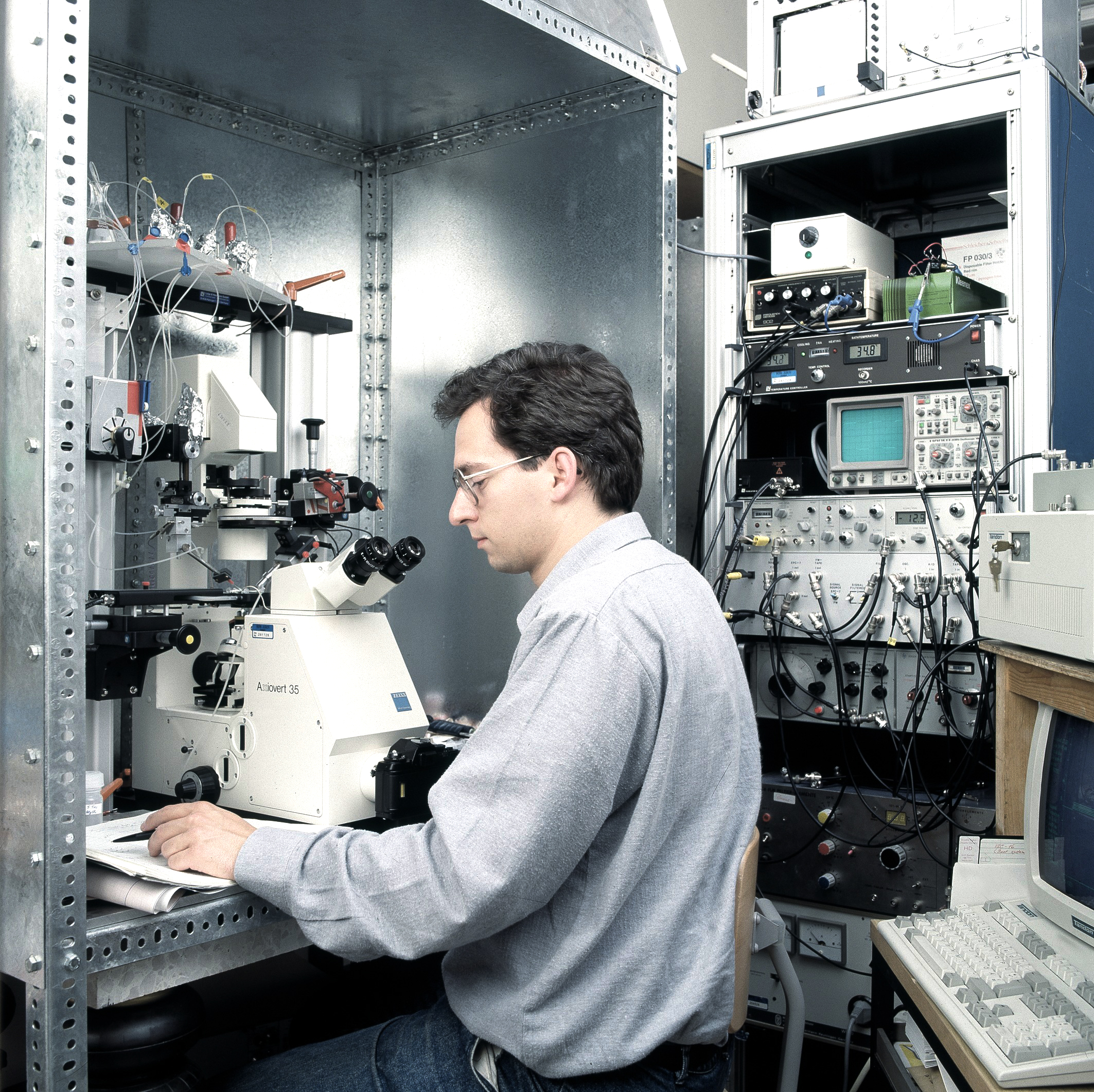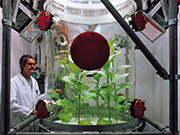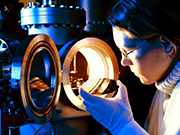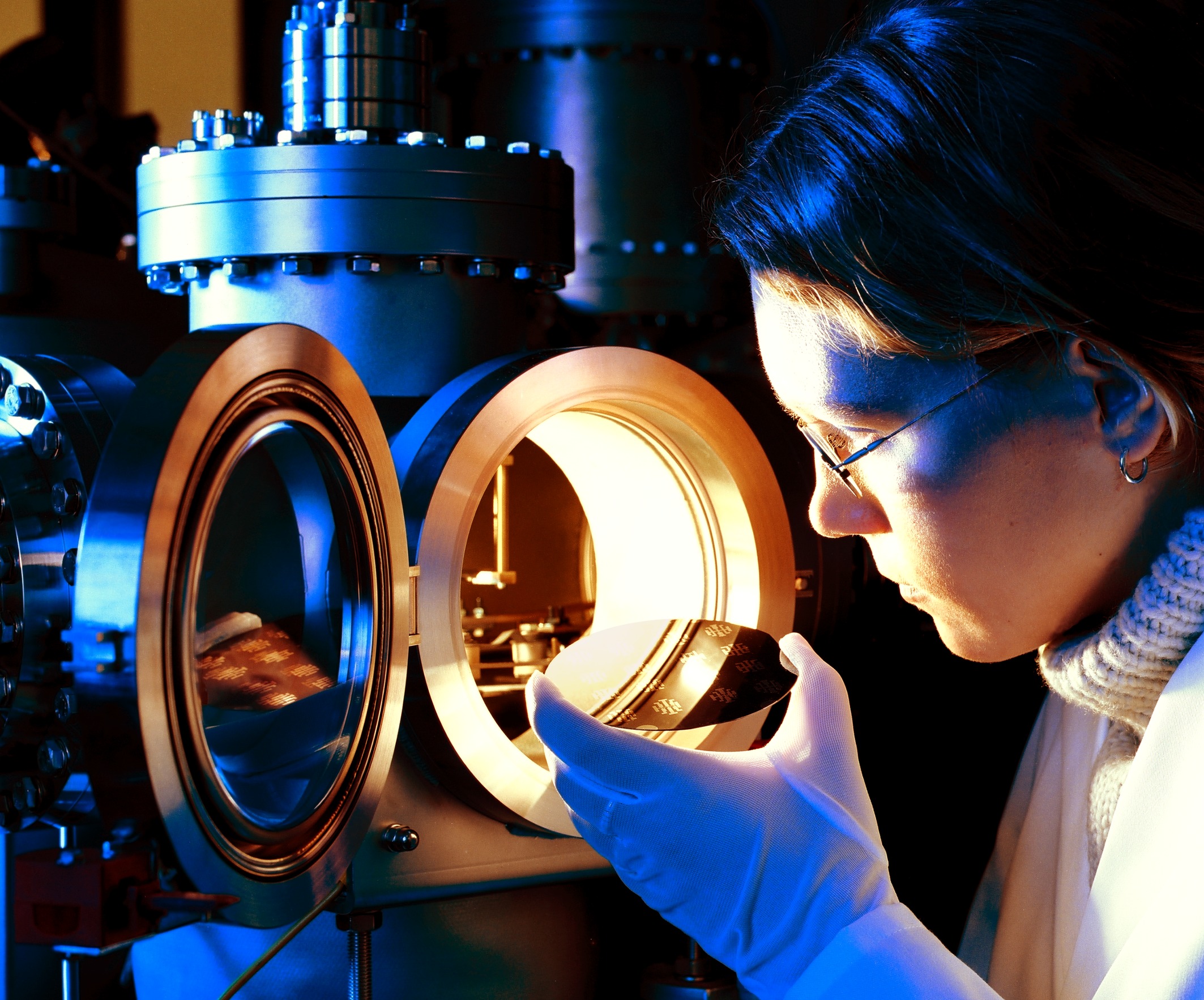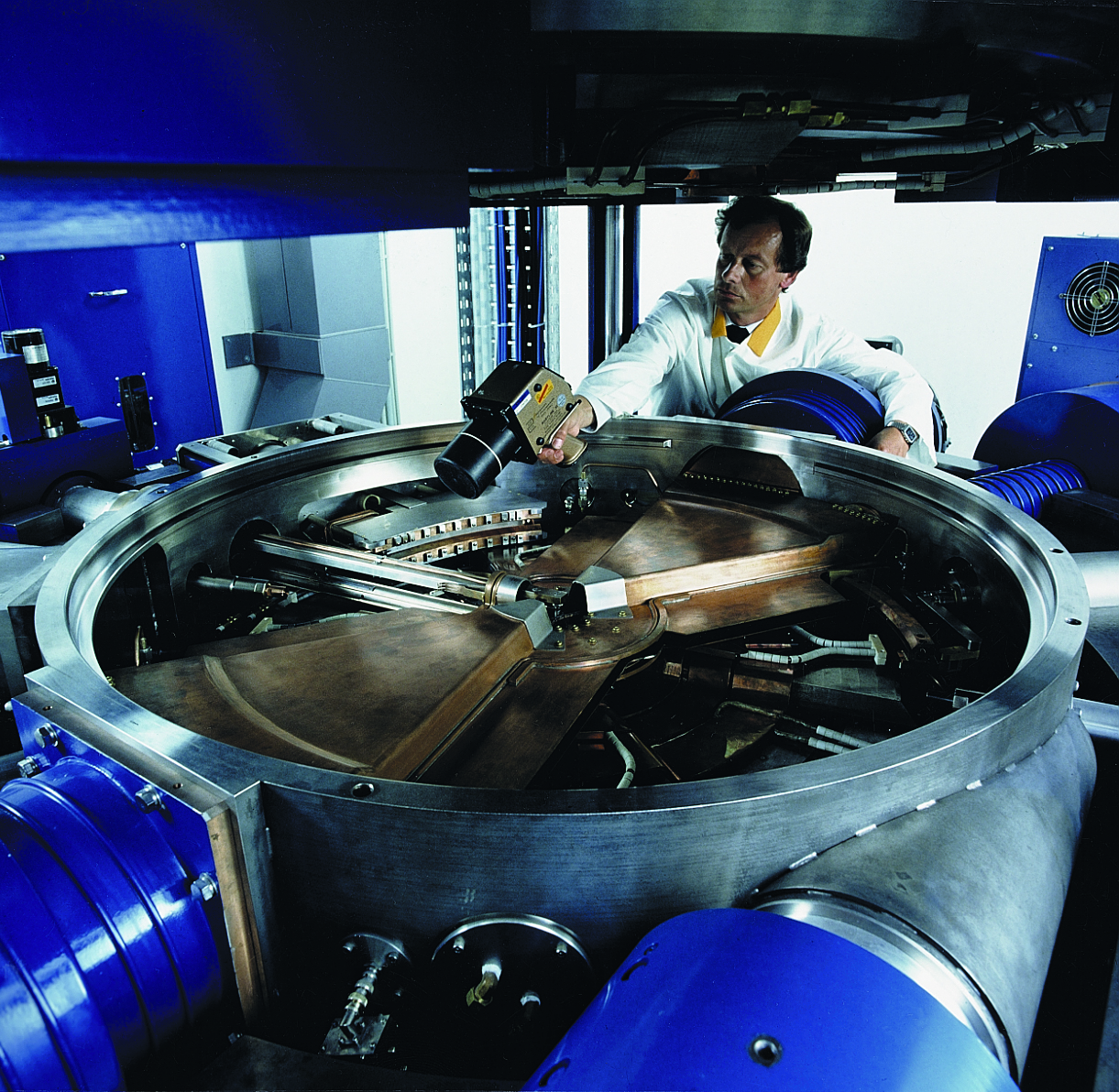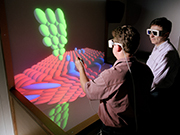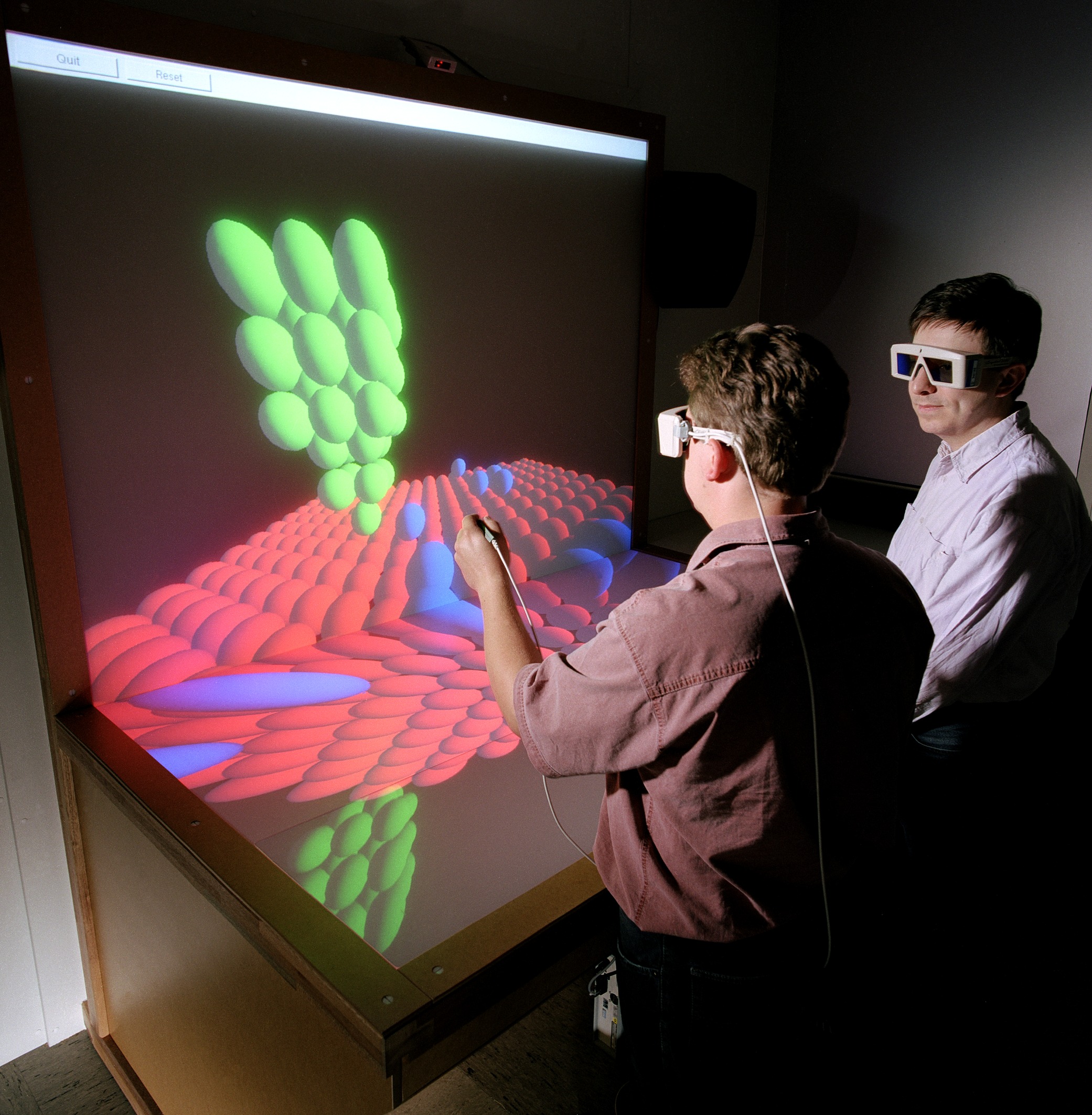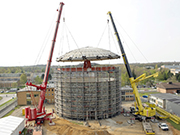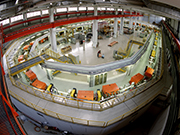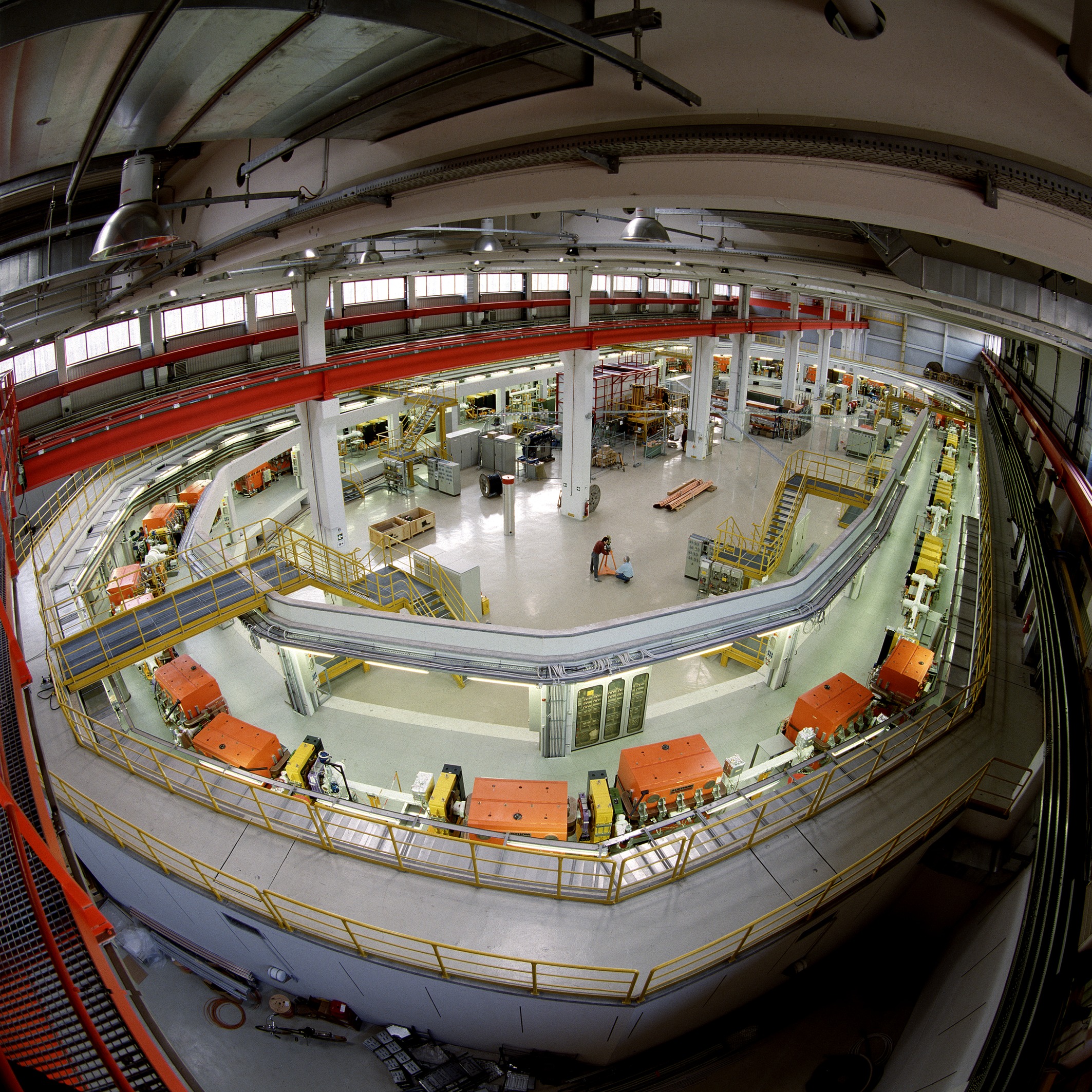Forschungszentrum Jülich adopted a new structure focusing on five key research areas: matter, energy, information, life, environment (known by the acronym MEILE). From 1995 onwards, Jülich became a beacon of supercomputing. Powerful supercomputers fundamentally changed science, as simulation began to establish itself as a third methodological pillar alongside experiment and theory.
Soil and environmental research evolved with the addition of climate research and now embraced the entire spectrum, from sedimentary systems in the soil to plants and also the troposphere and stratosphere layers of the atmosphere. Investigations in this field were further advanced by key research installations such as the SAPHIR atmosphere simulation chamber (inaugurated in 2001) and the Phytec experimental greenhouse facility (from 2004). Energy research was boosted when the Institute of Photovoltaics was founded in 2000.
In 1999 radioactive contamination of the soil and groundwater was discovered close to the AVR reactor building – a consequence of the 1978 incident. Regular water and soil testing was introduced immediately. In the course of its work, the TÜV technical inspectorate entrusted with carrying out the tests was able to rule out both past and present threats to human life and the environment.
Challenges and strategies
Research dealing with the pressing issues of the future became a national responsibility and required a well-planned approach – on this premise, several ministries drew up a joint high-tech strategy, which the Federal Government presented in 2006. The strategy called for networking of science with industry and provided clear guidelines for research funding. In future, research was to concentrate on "innovative fields" such as energy, health, and biotechnology.
In the meantime, scientific methods were changing fundamentally, in particular as a result of the greater possibilities afforded by information technology. At ever shorter intervals, new generations of computers offered ever faster computing speeds. Supercomputers with such prodigious capacities were essential for climate modelling, for example, or when attempting to simulate the human brain.
The expectations made of research ranged widely: as well as injecting impetus in areas of basic research, it had also to collaborate on developing innovative products in partnership with industry.
Dates
| 1993 | The COSY particular accelerator, a cooler synchrotron, commences operation |
| 1993 | The PHOEBUS photovoltaic plant on campus produces electricity for the first time |
| 1994 | The magneto-encephalograph makes brain functions visible |
| 1997 | Water molecules become visible for the first time by scanning tunnelling microscopy |
| 2004 | The Ernst Ruska-Centre for Microscopy and Spectroscopy with Electrons is inaugurated |
| 2005 | Official opening of the Biomolecular NMR Centre |
| 2006 | The DIDO (FRJ-2) reactor is decommissioned; the Jülich Centre for Neutron Science is founded and from now on operates its instruments at the FRM-II research reactor in Garching |


